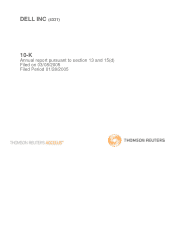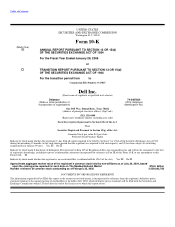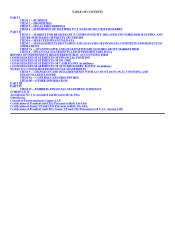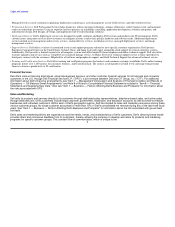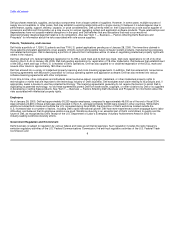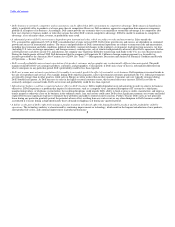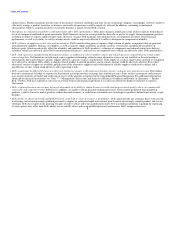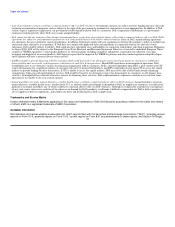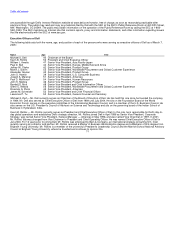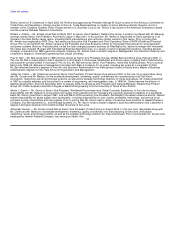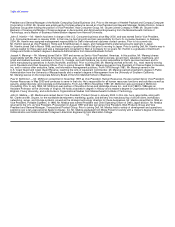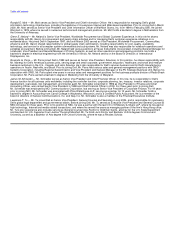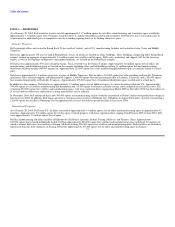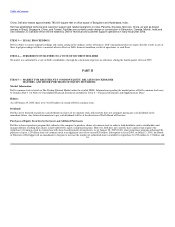Dell 2004 Annual Report Download - page 9
Download and view the complete annual report
Please find page 9 of the 2004 Dell annual report below. You can navigate through the pages in the report by either clicking on the pages listed below, or by using the keyword search tool below to find specific information within the annual report.
Table of Contents
Dell purchases materials, supplies, and product components from a large number of suppliers. However, in some cases, multiple sources of
supply are not available. In other cases, Dell may establish a working relationship with a single source if it believes it is advantageous due to
performance, quality, support, delivery, capacity, or price considerations. Dell currently relies on Intel Corporation as a sole source supplier of
processors and Microsoft Corporation as a sole source for various operating system and application software products. These relationships and
dependencies have not caused material disruptions in the past, and Dell believes that any disruptions that may occur would not
disproportionately disadvantage Dell relative to its competitors. Also see "Item 1 — Business — Factors Affecting Dell's Business and
Prospects" for information about the risks associated with sole-source suppliers.
Patents, Trademarks, and Licenses
Dell holds a portfolio of 1,128 U.S. patents and has 719 U.S. patent applications pending as of January 28, 2005. The inventions claimed in
those patents and patent applications cover aspects of Dell's current and possible future computer system products, manufacturing processes,
and related technologies. Dell is developing a portfolio of patents that it anticipates will be of value in negotiating intellectual property rights with
others in the industry.
Dell has obtained U.S. federal trademark registration for its DELL word mark and its Dell logo mark. Dell owns registrations for 45 of its other
marks in the U.S. As of January 28, 2005, Dell had pending applications for registration of 18 other trademarks. Dell believes that establishment
of the DELL mark and logo in the U.S. is material to Dell's operations. Dell has also applied for or obtained registration of the DELL mark and
several other marks in approximately 180 other countries.
Dell has entered into a variety of intellectual property licensing and cross-licensing agreements. In addition, Dell has entered into nonexclusive
licensing agreements with Microsoft Corporation for various operating system and application software. Dell has also entered into various
software licensing agreements with other companies.
From time to time, other companies and individuals assert exclusive patent, copyright, trademark, or other intellectual property rights to
technologies or marks that are important to the technology industry or Dell's business. Dell evaluates each claim relating to its products and, if
appropriate, seeks a license to use the protected technology. The licensing agreements generally do not require the licensor to assist Dell in
duplicating its patented technology, nor do these agreements protect Dell from trade secret, copyright, or other violations by Dell or its suppliers
in developing or selling these products. See "Item 1 — Business — Factors Affecting Dell's Business and Prospects" for information about the
risks associated with intellectual property rights.
Employees
As of January 28, 2005, Dell had approximately 55,200 regular employees, compared to approximately 46,000 as of the end of fiscal 2004.
Approximately 24,600 of these employees were located in the U.S., and approximately 30,600 were located in other countries. While Dell's
workforce located both inside and outside the U.S. increased during fiscal 2005, the proportion of Dell's workforce located outside the
U.S. increased due to a number of factors, including Dell's rapid international growth. Dell has never experienced a work stoppage due to labor
difficulties, and believes that its employee relations are good. Workforce diversity is an essential part of Dell's commitment to quality and the
future of Dell, as recognized by Dell's receipt of the U.S. Department of Labor's Exemplary Voluntary Achievement Award in 2003 for its
industry-leading workforce diversity efforts.
Government Regulation and Environment
Dell's business is subject to regulation by various federal and state governmental agencies. Such regulation includes the radio frequency
emission regulatory activities of the U.S. Federal Communications Commission, the anti-trust regulatory activities of the U.S. Federal Trade
Commission and 6

